
Kasha Dubaniewicz
Kasha is passionate about high-impact storytelling and believes in making positive changes that will lead to a better and happier world for all.
Are your plants showing worrying signs of ill health? Well, not all plant health issues are caused by pests or diseases. Instead, there are other factors to consider, such as nutrient imbalances, where your plants may be getting too much or too little of a particular element.
Luckily, there are some visual clues you can look out for. It's worth noting that many deficiency symptoms look similar, usually involving the discolouration or distortion of your plants' leaves or stems. In this post, we'll be going through all the most common nutrient deficiencies in plants and how you can go about fixing these.
Article contents - click on the titles below to visit the section you need
- What are nutrient deficiencies?
- Common symptoms of a nutrient deficiency
- Before you start treatment: a checklist
- The macronutrients
- The micronutrients
- Measuring pH, EC and temperature regularly can help prevent nutrient deficiencies - here's how
What are nutrient deficiencies?
All plants need nutrients so that they can grow and achieve optimal plant health. If you're growing in soil, your plants will get their nutrients from fertilisers as well as the natural composition of the type of soil you're using. For hydroponics and other soil-less media, you'll most likely be using a premixed nutrient solution.
Regardless of which growing method you're using, you'll need to ensure that your plants have access to the right amount of nutrients, but also the right balance of nutrients.
That's because your plants will need larger amounts of a particular set of essential elements known as macronutrients. Macronutrients consist of nitrogen, potassium, phosphorus, calcium, sulfur and magnesium.
Your plants will also need smaller amounts of other nutrients, which are known as micronutrients. These include boron, copper, iron, manganese, molybdenum and zinc.
Most nutrient deficiencies are caused by a lack of nutrient content in the growing medium or nutrient solution. However, environmental factors can play a role too, as unfavourable growing conditions can affect your plants' ability to take up nutrients. This can happen when your growing medium is too acidic or alkaline, or is affected by either dryness or waterlogging.
If left untreated, a nutrient deficiency can impact a plant's ability to complete its natural lifecycle of flowering and fruiting.
While this article specifically deals with nutrient deficiencies, it's worth keeping in mind that your plants can also suffer from nutrient toxicities, where they're absorbing or exposed to too much of a particular macro- or micronutrient. These will also have a number of tell-tale visual symptoms.
Common symptoms of a nutrient deficiency
The most obvious visual symptom of a plant nutrient deficiency is leaf discolouration or distortion. However, it's important to note that many deficiency symptoms look similar and it's common that your plants will actually be experiencing a combination of nutrient deficiencies simultaneously.
Here are the most common symptoms of nutrient deficiencies in plants:
- Yellow leaves
- Yellow or brown leaf edges
- Holes in leaves
- Leaves look burnt or scorched
- Leaves have a purple or red tone
- Yellowing between leaf veins
- Small or stunted leaves
- Yellow or brown spots on leaves
- Twisted or misshaped leaves
- Stunted roots
- Yield differences
- Crop failure
We'll be going into more detail into these symptoms and their associated deficiencies below.
Before you start treatment: a checklist
While you may be tempted to jump straight into treatment once you've identified a potential nutrient deficiency, it's important to rule out other important factors that could be affecting your plants' health. Use this checklist to assess whether there are any other issues going on:
- Check for signs of insects or diseases. Some pests, such as worms or spider mites, can cause leaf discolouration or leaf holes. Likewise, certain viruses and diseases, including mosaic virus or grey mould, can change the appearance of your leaves.
- Check your soil. If you're using soil as a growing medium, check that you aren't over- or underwatering it. Leaf discolouration and stunted plants can be caused by soil that is too wet or drains poorly, or by soil that is too compacted. In addition, you can commission a soil analysis, which will look at the overall nutrient composition, making it easier to identify a deficiency.
- Check your water. Water quality plays a big role in healthy crop growth, where some sources of water, such as hard water, will already contain a number of nutrients, which means you'll have to adjust your feeding plan. Consider commissioning a lab analysis of your water so that you can be aware of its exact composition.
- Check the temperature of your growing environment. If this environment is too hot or too cold, this can result in slower plant growth while also affecting fruiting and flowering.
- Check your nutrient strength. As mentioned above, the balance of nutrients is important, but it's also crucial that you don't end up over- or underfeeding your plants. If your nutrient dose is too strong, this can result in your plants looking scorched; too weak and your plants will have slower or stunted growth.
- Check your pH (potential Hydrogen). All plants have a preferred pH range in which they'll have the optimal conditions for nutrient uptake. If your soil or nutrient solution is too acidic or too alkaline, this will affect your plants' ability to access the nutrients they need.
- Call in an expert. If you have a cash crop and suspect that you're dealing with a nutrient deficiency, it's always best to call in a plant nutrition expert than it is to try and identify the issue yourself.
The macronutrients:
So you've gone through the checklist above and still have a plant health problem? Your plant may be suffering from a macronutrient deficiency. Check each macronutrient below for common symptoms and how to fix the issue.
Keep in mind that each nutrient will have multiple roles within a plant, which is why deficiency symptoms may seem quite diverse.
Nitrogen deficiency in plants

What does it look like? A nitrogen deficiency can manifest in a number of ways. The most common representation is yellowing lower leaves, with pale green leaves at the top of the plant. Growth will also be affected, so you could also see weak branches or shoots. In some plant species, you might also notice purple stripes on the plant stem. If left untreated, your crop yield will be vastly reduced due to poor plant growth.
Why does it happen? Nitrogen is a key component of plant proteins, thereby promoting healthy growth, so it makes sense that a nitrogen deficiency results in yellowed and stunted growth. Nitrogen also plays a role in the formation of chlorophyll, which is essential for photosynthesis, and is also involved with enzyme reactions and plant metabolism.
There are a few different causes for a nitrogen deficiency. It could be caused by having a pH that's too high or too low, nutrient imbalance or natural soil depletion. In addition, nitrogen is soluble so, if you're growing in soil, it can easily wash away with frequent rain, leaving your soil deficient.
How do you fix it? Since nitrogen will no doubt be part of most nutrient mixes and fertilisers, it may be tempting to simply apply a higher dose to fix a nitrogen deficiency. However, this will also increase all other nutrients too, which could lead to other issues.
Instead, for a quicker solution, you can try using a nitrogen-specific nutrient additive - remember to choose the right option for your growing medium. In addition, for soil-based plants, mulching with organic matter, such as compost or manure, can lead to a steady supply of nitrogen in the long term.
Phosphorus deficiency in plants
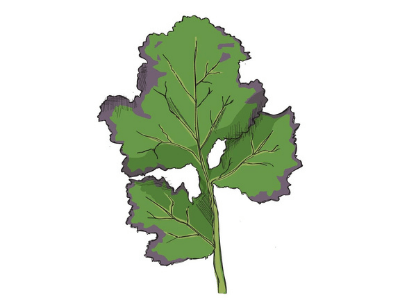
What does it look like? The older leaves of your plant will be affected by a phosphorus deficiency first, with leaves taking on a dark green colour that can be tinged with purple, bronze or red. Growth will be stunted; if the deficiency is left untreated, leaves can develop brown spots and necrosis.
Why does it happen? Phosphorus has a wide array of functions within plants. Not only is phosphorus a key component of plant DNA and RNA, it also plays a role in important activities like cell division, photosynthesis, plant development and protein synthesis. Phosphorus also contributes to the general hardiness of your plant, helping it withstand diseases and other health issues.
A phosphorus deficiency will most likely be caused by incorrect pH or a nutrient imbalance. However, phosphorus uptake can also be affected by extreme cold, which is something to take into consideration if you're growing your plants outside. It can also be caused by having excess iron in your growing medium.
How do you fix it? Since most nutrient solutions and fertilisers contain phosphorus as a key component, it may be tempting to simply ramp up the dosage. However, this may lead to you oversupplying other nutrients to your plants.
Instead, try a phosphorus-rich additive, like superphosphate. You can also consider options like bone meal or phosphate rock. Just remember to choose the correct product for your growing medium.
Potassium deficiency in plants
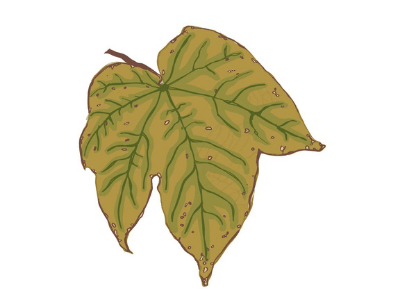
What does it look like? The most common symptoms of a potassium deficiency are brown or burnt-looking leaf edges and tips, coupled with chlorosis between leaf veins. You may also see purple spots on the underside of your leaves. If left untreated, a potassium deficiency can cause leaf necrosis, slow growth and your plants will be more susceptible to disease.
Why does it happen? Potassium plays a number of important roles in plant health and development. This nutrient helps to control water uptake, aids photosynthesis and promotes fruiting, flowering and resistance to diseases. Potassium also regulates the plants' stomata, which control water loss and gaseous exchange.
Potassium deficiencies are more common when you grow plants in light, sandy or chalky soils where potassium can easily wash away or leach out. A potassium deficiency could also be caused by having incorrect pH, which could make nutrients unavailable to your plants.
How do you fix it?
To fix a potassium deficiency, you can try potassium-rich additives such as sulfate of potash, tomato feed or organic sources, such as seaweed or kelp treatments - just remember to choose the right product for your growing medium. It's also worth keeping in mind that some of these solutions may alter your pH.
Calcium deficiency in plants
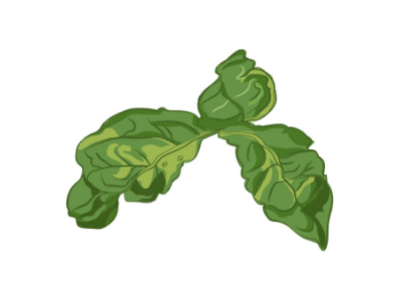
What does it look like? A calcium deficiency will usually affect newer leaves and other new growing points of the plant, resulting in new growth that looks withered, stunted or twisted; tip burn is also common. A plant with a calcium deficiency will eventually drop its flowers; any fruit will look small or diseased. In tomatoes and peppers, a calcium deficiency will result in blossom end rot, where the fruit will have a dark spot at the bottom.
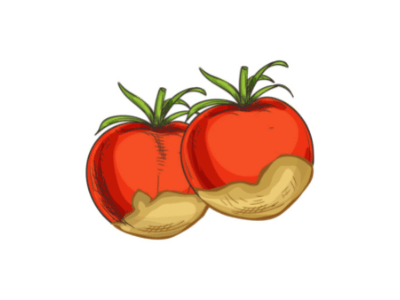
Why does it happen? Calcium plays an important role in healthy plant development. It's essential for plant cell formation, essentially helping to hold the cell walls and membranes together, as well helping to create new cells. This is why a calcium deficiency affects the growing points of a plant.
A calcium deficiency could have a number of different causes - your root zone pH could be too high or too low, you may not be watering your soil enough or there may be a nutrient imbalance in your growing medium. However, it's important to note that once it is absorbed, calcium is essentially immobile, staying within the older developed plant tissues. You'll need to have a steady supply of calcium so that this all-important nutrient can be absorbed into the newer, developing parts of the plant too.
How do you fix it? Ensure that you're using a water-soluble calcium source, like calcium nitrate. In soil, you can opt to apply calcium sources like lime, bone meal or gypsum, but be aware that these can alter your pH or add additional nutrients along with calcium.
For hydroponics, you should use a calcium-only additive so that you don't oversupply your plants with other nutrients. If you're using hard water for your plants, it's important to note that this type of water normally contains high levels of dissolved calcium and other nutrients.
Magnesium deficiency in plants
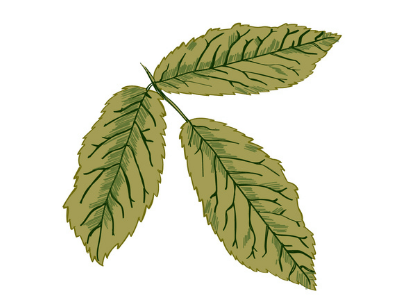
What does it look like? The most common representation of a magnesium nutrient deficiency is when the lower, older leaves look chlorotic between their leaf veins, where the leaf becomes pale while the leaf veins remain green. If left untreated, growth will become stunted and parts of your plant may suffer from necrosis. Some plants are more susceptible to a magnesium deficiency; these include tomatoes, apples, potatoes, raspberries and rhododendrons.
Why does it happen? Magnesium is a key component of chlorophyll, which is what makes plants green and also plays a critical role in photosynthesis. This means that magnesium is essential for optimal plant health as well as continuing growth.
When you're growing in soil, a magnesium deficiency is more common in light, sandy soils. This deficiency can also be caused by the overuse of a potassium-rich additive, like tomato feed, as your plants will automatically take up potassium in preference to magnesium. The overuse of calcium can also cause a magnesium deficiency in plants.
As always, whether you're growing hydroponically or in soil, if your pH is off, this can also make magnesium unavailable to your plants.
How do you fix it? To correct a magnesium deficiency, try applying a foliar spray. In theory, a foliar spray can take effect quickly, as plants can absorb nutrients through their leaves faster than through their roots and stem. Create a foliar spray using Epsom salts (magnesium sulfate); this should be heavily diluted to roughly one tablespoon per gallon of water.
You can also try options like dolomite or another magnesium-rich additive; just keep in mind that some of these options may affect your pH.
Sulfur deficiency in plants

What does it look like? Symptoms of a sulfur deficiency will appear at the top of your plant in its newer leaves, which will take on a chlorotic appearance - pale green that eventually turns to a deep yellow. You can also see stunted growth in these newer leaves and, in some types of plants, the leaf stem could take on a purple tint.
It's important to note that a sulfur deficiency looks similar to a nitrogen deficiency; the key is to notice where the yellowing of leaves begins in your plant.
Why does it happen? Like many nutrients in this list, sulfur plays a variety of roles; this nutrient is a component of chlorophyll and aids protein synthesis. In addition, the correct amount of sulfur will ensure that nitrogen can be used correctly by your plants; due to this strong link, it's not uncommon that a grower treats their plants for both a nitrogen and sulfur deficiency simultaneously.
There are two of the most common causes of a sulfur deficiency: incorrect pH and nutrient imbalance. However, if you use phosphorus-rich additives regularly, this may cause a sulfur deficiency as phosphorus tends to displace sulfur.
How do you fix it? Sulfur is only available to plants in the form of a sulfate, which is why many growers use a sulfur-rich additive like sulfate of potash, magnesium sulfate or ammonium sulfate to treat this deficiency. Be aware that these solutions will also be adding other elements to your root zone.
You can also opt to use diluted Epsom salts (magnesium sulfate) in a foliar spray.
For those growing in soil, you can treat a sulfur deficiency with organic options, although it will take time for these to break down into the sulfates needed by your plants.
The micronutrients:
As the name suggests, you may not need large doses of micronutrients for optimal plant health, but that doesn't mean that micronutrient deficiencies don't exist.
If you've gone through our general plant health checklist and list of macronutrient deficiencies, read on to find out whether your plant is showing the symptoms of a micronutrient deficiency and how you can go about fixing it.
Iron deficiency in plants

What does it look like? One of the tell-tale signs of an iron deficiency is interveinal chlorosis - in this case, it's the younger and emerging leaves that take on a paler or yellow colour while the leaf veins remain darker. You may also notice new shoots dying off, starting at the tip.
If allowed to progress, a severe iron deficiency will lead to your leaves turning white.
Why does it happen? Iron plays a key role in the formation of chlorophyll, which not only gives plants their green colour but is also important for photosynthesis.
Like many of the deficiencies on our list, an iron deficiency can be caused by a nutrient imbalance, a root zone pH that's too high or low as well as over- or underwatering if you're growing in soil.
However, an iron deficiency can also occur when there's an excess of manganese, copper or zinc, as this can impact iron uptake by your plants.
How do you fix it? Once you've addressed any pH or nutrient imbalance issues, in the short term, you could consider using a foliar spray of diluted ferrous sulfate, which should be applied to the affected leaves.
For a longer-term solution, you should look for an additive that contains iron chelate compounds, as this is the plant-available form of iron and ensures the best chance of uptake. Remember to choose the right product for your growing medium.
Zinc deficiency in plants
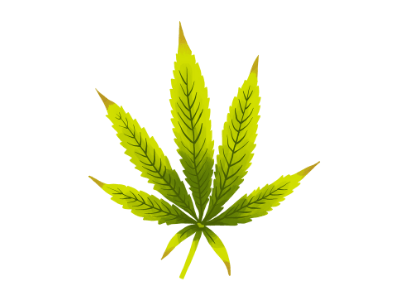
What does it look like? Like a few other micronutrient deficiencies, a zinc deficiency mainly affects the newest leaves of your plant. You can expect to see interveinal chlorosis, where the leaf turns yellow while the veins remain green.
In addition, these leaves may develop spots of necrosis and may also look smaller than expected, with a mottled or bronzed appearance. Due to shorter internodes, new leaves can also grow clustered together in a rosette formation.
Why does it happen? Although your plant only needs small amounts of zinc, this micronutrient plays a number of important roles to keep your plants healthy. Zinc helps your plants to produce chlorophyll, enzymes, sugars and proteins.
Zinc deficiencies are more common in sandy soils, as well as in growing media that have a high pH (alkaline). In addition, excess amounts of phosphorus can make zinc unavailable to your plants.
How do you fix it? For a quicker solution, you can apply a foliar spray of zinc sulfate or zinc chelate directly to the affected leaves.
To remedy a lack of zinc in your growing medium, you should consider using a zinc chelate-rich additive, as this is the form of zinc most readily available to your plants. Keep in mind, however, that if your growing medium has a high pH, this needs to be fixed before trying to treat your plants' root zone for a zinc deficiency.
Boron deficiency in plants
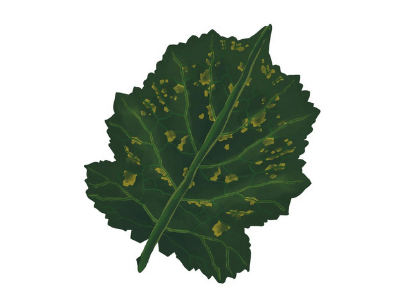
What does it look like? A plant showing stunted and deformed growth is one of the most common representations of a boron deficiency. A boron deficiency affects your plants' roots and shoots, where roots become thick and short with swollen root tips; sometimes a large number of small secondary roots grow, leading to a phenomenon known as 'witch's broom'.
As a boron deficiency progresses, your older leaves will look dark green and glossy, while new growth will be brittle or leathery to the touch. Newer leaves may also take on a rust-like appearance.
Why does it happen? Boron is important for your plants' vegetative and reproductive stages, as it plays a role in cell expansion, water management and transportation of carbohydrates, among other functions.
The causes for a boron deficiency range from using frequently leached sandy soils, as boron is soluble and can therefore get flushed out easily, to having a growing medium with a high pH (alkaline), which will make boron unavailable to your plants. Over- or underwatering your plants can also affect boron availability.
How do you fix it? Most growers use borax or boric acid to treat a boron deficiency. This can be diluted and added to your nutrient solution or fertiliser. Seek advice for your particular growing medium before starting treatment, as excess boron is toxic to plants.
In addition, while you can use borax or boric acid as a foliar spray, this can end up burning your leaves, so it's recommended to add this to your growing medium instead. And, if your growing medium has a high pH, we recommend fixing this before starting any treatment for a boron deficiency.
Copper deficiency in plants
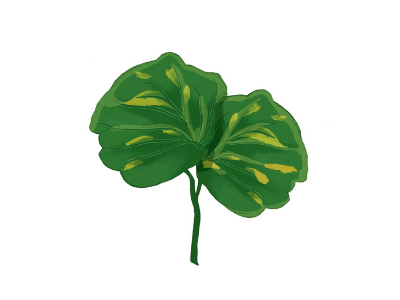
What does it look like? A copper deficiency will affect the newer leaves at the top of the plant as well as growth points. The new leaves will take on a stunted or wilted appearance, with spots of necrosis. Depending on the plant species, leaves can take on bluish-green tint and display interveinal chlorosis, where the leaf turns yellow but the veins remain green.
Mature leaves may begin to fall off and flower development will be impaired.
Why does it happen? Copper plays a role in the formation of chlorophyll, thereby having an important function in photosynthesis. This micronutrient is also essential for respiration, activating enzymes and cell membrane metabolism.
Copper deficiencies are most common in sandy soils, as well as in growing media with incorrect pH. Excessive levels of phosphorus and iron can also hinder copper uptake by plants.
How do you fix it? Since your plants don't need a lot of copper, try applying a foliar spray containing copper sulfate. This should be diluted and your pH should be correct before starting any deficiency treatment. Excess copper can result in toxicity, so it's safer to start out with a foliar spray and consider in-root zone options if the deficiency doesn't come right.
Manganese deficiency in plants
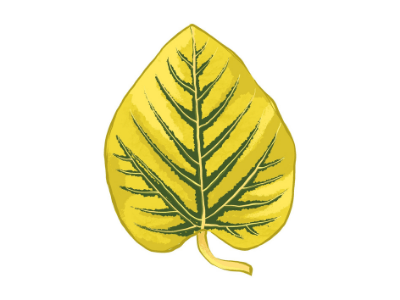
What does it look like? The most common symptom of a manganese deficiency is interveinal chlorosis in younger leaves, where the leaf will turn pale or yellow while the veins remain green. In the case of a manganese deficiency, the leaf edges may also remain green. Leaves may also take on dark or necrotic spots.
A manganese deficiency will drastically impact growth, impacting roots, shoots and leaves while also leading to a reduction in overall plant size.
Why does it happen? Manganese carries out a number of different functions for plant health and development, including chlorophyll formation, photosynthesis, respiration and cell division.
In terms of causes of a manganese deficiency, incorrect pH and nutrient imbalance are the most likely culprits. However, having too much iron in your growing medium can also cause a manganese deficiency, as this may affect your plants' access to manganese.
How do you fix it? Since too much manganese can result in toxicity, the first port of call should be too flush out your growing system with new pH-balanced water filled with the correct balance of nutrients, including manganese.
To treat the affected leaves, you can also apply a diluted foliar spray of manganese sulfate or manganese chelate, which is a short-term fix for a manganese deficiency.
Molybdenum deficiency in plants
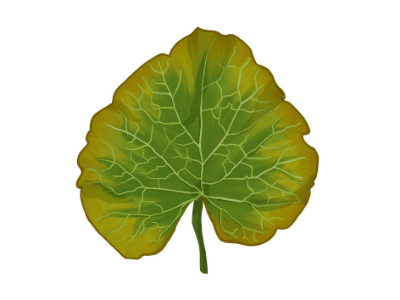
What does it look like? A molybdenum deficiency commonly presents itself in the lower, older leaves of the plants, which begin to take on a mottled yellow colour at the edges. The rest of the leaves may take on a light green appearance.
As this deficiency progresses, you can expect to see necrosis of the leaf edges and leaves can take on a narrow or deformed appearance.
Why does it happen? Molybdenum is required for a variety of plant growth processes, but is needed only in tiny quantities. This micronutrient is essential for converting nitrogen into ammonia, which is needed for optimal plant health.
The most likely cause of a molybdenum deficiency is incorrect pH or an imbalance of nutrients.
How do you fix it? Since molybdenum is needed in such a small amount, we'd recommend flushing your growing system is fresh, pH-balanced water with the correct balance of nutrients, including molybdenum.
In addition, you can also try a foliar spray that contains molybdenum. We'd recommend speaking with your local nutrient supplier to find the right option for your plants.
Measuring pH, EC and temperature regularly can prevent nutrient deficiencies - here's how
As you can see above, a lot of nutrient deficiencies look similar and it can be confusing to try and identify which one you're currently dealing with. Luckily, there's an easier way - if you regularly measure the key fundamental parameters of pH, EC and temperature, you'll be drastically reducing the chance of dealing with a nutrient deficiency.
That's because these three parameters are essential for achieving optimal plant health. Check out our post on how to measure and adjust pH, EC and temperature. After all, it's always easier to prevent a nutrient deficiency than it is to identify and treat it!




Submit a comment